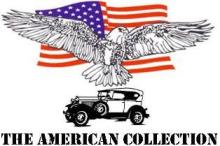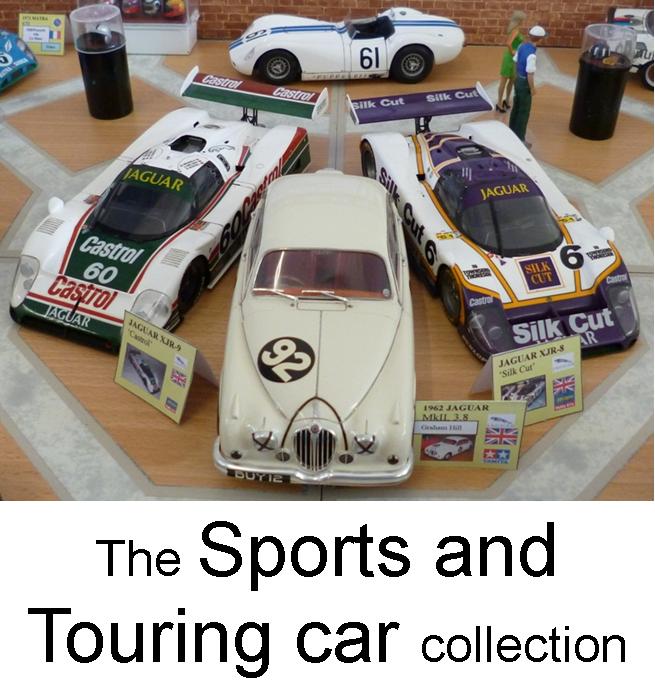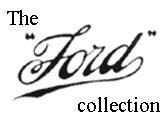
When the 1969 model year began Ford already had five all-new Mustang models. To this line up they added the Boss 302 and 429 versions. The Boss series would go on to give the world some of the outstanding moments of the entire “ponycar” range history. The seeds of the Boss series cars were sown in early 1968 when Semon E. "Bunkie" Knudsen was lured away from General Motors, with him came stylist Larry Shinoda. Knudsen thought Ford needed a super-hot, small-block car to compete against Chevrolet's road going Camaro. The car he used for this project was the Ford Mustang originally used in the Trans-Am racing series. The 302 program included Ford's drive to win the SCCA Trans-Am Championship and as such was kept under wraps, when Larry Shinoda was asked what he was doing his answer became the inspiration for the new models name; Shinoda simply replied he was working on "the boss's car".
The new body make over got rid of the fake rear fender scoops of the road-going 1969 Mustangs and replaced it on the 302 cars with a reflective "c-stripe" which included the “Boss” logo. The front spoiler and rear deck wing made this the first production car to have them and black horizontal rear window shades and blackout hood options really made the car stand out. Why the two versions I hear you ask? Well Ford also wanted an engine which could be homologated for NASCAR competition. Ford's aim was to put two trophies on the mantle piece, from two cars, with different engines and sporting two different personalities.
As it happens it was the 429 car that went on sale first; in mid-January 1969. Featuring a huge hood scoop, fastback 'Sports Roof' body and big Goodyear Polyglas F60 x 15 tyres it grabbed your attention and shock you were you stood; even before it turned the motor over. The "semi-hemi" 429-ci V-8 engine, aimed at the NASCAR series, had strength built into it. Forged steel crankshaft with with four-bolt mains was topped by aluminium cylinder heads with magnesium covers. A four-barrel Holley 735-cfm carb' straddled the high-riser manifold. The Boss 429 accelerated from 0-60 mph in 5.3 secs and could run the quarter in just over 14secs hitting 102 mph at the line. Officially the 429 turned out 375-bhp, although Ford later admitted that was a conservative figure, torque output was reported as 450 ft/lbs. These modifications came at a price though and only 858 were sold making it one of the rarest Mustangs out there, $4,798 was rather a lot in 1969, and the Boss 429 didn't even have the trademark “Boss” striping just a black spoiler and grille to set it apart.
As for the 302 Trans-Am Mustang Lee Dykstra chose Kar Kraft in Brighton, Michigan, to built the first factory prototypes known as the M-code Mustangs. Essentially a standard 428 Cobra Jet fastback car was stripped back to the bones and reworked. Weight was pared back, with a 2900lbs limit in mind, and many parts repositioned to give better weight distribution. Amongst the weight saving modifications were making components from aluminium, using lighter panel stampings and thinner glass. The battery was moved and even the 22 gallon fuel tank was lowered in the search for handling and responsiveness. The engine was lowered and moved back with both engine and transmission resting on solid mounts. A Holley Dominator 1050cfm 4-Barrel Carburettor sat on a 'Cross-Boss' manifold, the 351 Cleveland cylinder head, a 302 Windsor block and an all new bottom end. These specially built engines had titanium valves and while Trans Am rules prohibited the use of a dry sump system Kar Kraft incorporated the next best thing by using three separate oil pickups in the sump. These engines were reported to produce 470 bhp by mid-season 1969
The body work required extensive reworking to push all the fender wells in to make clearance for the larger wheels and tires. The front spring towers were widened to fit the engine in and Kar Kraft developed strut-tower braces to aid rigidity. This was followed by lowering and repositioning the suspension, adding shorter upper control arms the front end bodywork was also modified so the fenders had a greater taper and sat lower to the ground. While Heavy duty springs supported the front of the car the rear leaf springs had to be trimmed down by around ¾" in order to fit the wider wheels and tyres. Koni double-adjustable aluminium shocks and a "clamp-on" stabilizer bar were added with the floating axle assembly held in place by a Watts linkage. Nearly all the suspension pick up points were relocated and the connections converted to solid metal bushings. Incidentally, Trans-Am rules required the track width be no wider than the production car so the wheels and tyres had to be moved in rather than putting wider arches on. Also the wheels could not be bigger than 8", so Goodyear and Firestone developed tyres with a special Cantilever sidewall so they could put 10" of tread on the race track. Braking was by 11.96-inch Lincoln discs were grabbed by Kelsey-Hayes 4-piston callipers at the front and 11.3-inch drums on the back. Some cars later had discs on the back axle too.
Kar Kraft blueprints then went to Ford and seven sets were sold, along with the base cars, to racing teams who added their own tweeks and roll cages to contributed to overall rigidity. Kar Kraft themselves delivered semi-finished cars to both Bud Moore and Carroll Shelby each team having two primary cars and between two and four back-up cars. Kar Kraft also built one more car, a special car, for Smokey Yunick to race in NASCAR’s ‘Baby Grand’ stock car series.
The SCCA Trans-Am series was version of "stock-car" racing and the 1969 Trans-American Sedan Championship was the 4th such series run by the Sports Car Club of America. The first to run without co-drivers as mandatory the year in which the Pontiac 'Trans-Am' made it's debut. Pontiac had unwittingly infringed on the SCCA registered trademark and GM had to pay SCCA $5 for every 'Trans-Am' they sold. The races were generally between 2.5 and 3 hours in duration and run on road courses.
Ford's factory teams for 1969 were Bud Moore Engineering team and Carroll Shelby’s team. The smart money was on Chevrolet’s Camaro to win the title, in the form of Mark Donohue's Blue #6 Sunoco sponsored car, but the Ford backed teams had strong driver lineups too. F1 fans will recognise the names of Peter Revson, Dan Gurney (Horst Kwech, Sam Posey, backed them up) on Team Shelby while Bud Moore had U.S. Stars Parnelli Jones and George Follmer on the driving staff.
Round 1 of the series was held on the 11th of May 1969 at Michigan International Speedway, Brooklyn, Michigan, on the 5.327km road course. It was run over a four hour period resulting in a 344.24 miles race distance, or 554km if you prefer. Parnelli Jones had taken pole position with a lap of 2:25.100 but on race day the weather, even at the start time of 13:00hrs was awful not just cold but rain and fog too, even snow at one point in the day! Parnelli Jones put in an awesome driving display and won by over a lap, turning in an average speed of 137.563 kph. George Follmer did not finish due to Clutch problems.
While 1969 ultimately turned out to be a disappointment the Boss 302 Mustang would beat the Camaro to the 1970 title. Parnelli Jones was the "unofficial" drivers’ champion for Bud Moore with Lanky Foushee the crew chief taking care of the cars. Only four of the original 1969 M-code Mustangs remain in existence now.





1/32nd Scale kit.
Built by Ian.




In 2004 Hornby released a short lived series of 1/32nd scale cars before they eventually took over Airfix and started to revamp what was really a very old range. Strangely they haven't re-released their own range under the Airfix label but have added new models engineered in a similar, although evolving, fashion. The Hornby range had several very interesting cars within the range all developed, understandably, from the Scalextric range of cars. This means the kits are generally accurate in external shape but have exceptionally large and strong mountings. Taking the underside photo' above as an example you can see that a decent amount of detail has been added in an area not really seen; then spoiled by the overly large mounting of the chin spoiler. The Mustang Boss 302 kit, # K2002A, is rather nice, although all the parts are moulded in white plastic and no chrome parts are supplied, despite the photo on the box suggesting it does; clearly another sign of the slot car parts being used. Another being the fact that the body shell is the same as the Scalextric one and fits straight onto the Scalextric chassis unaltered.
This model was made as a way of trying out the Plamo UK paint range. The white is a standard car paint white by Carplan, the black is Plamo lacquer gloss black and the red is from the Deco-Art Americana range. Over all the colours and the decals is two coats of Plamo UK 2-Pack High gloss clear. As you can see the Plamo paints are as good as anyone else's paints for spraying through an airbrush and polishing, as well as being safe over decals.
The model is built straight from the box apart from some alterations to the decal layout, and some after-market decals, to represent the Michigan winner. All the additional painting was done with Citadel and Deco-art acrylic paints applied by brush or airbrush. Bare Metal Foil Ultra bright chrome was used for the window frames and the door handles but the bumpers were painted with Mr Metal Chrome, 'Klear' and rubbed with C1 metalizer powder. For the wheels Alclad II white Aluminium was used and this proved to be wonderfully easy to use as well as giving a superbly authentic looking finish. Amazing what you can achieve with the products available in 2014.
RETURN TO :-


